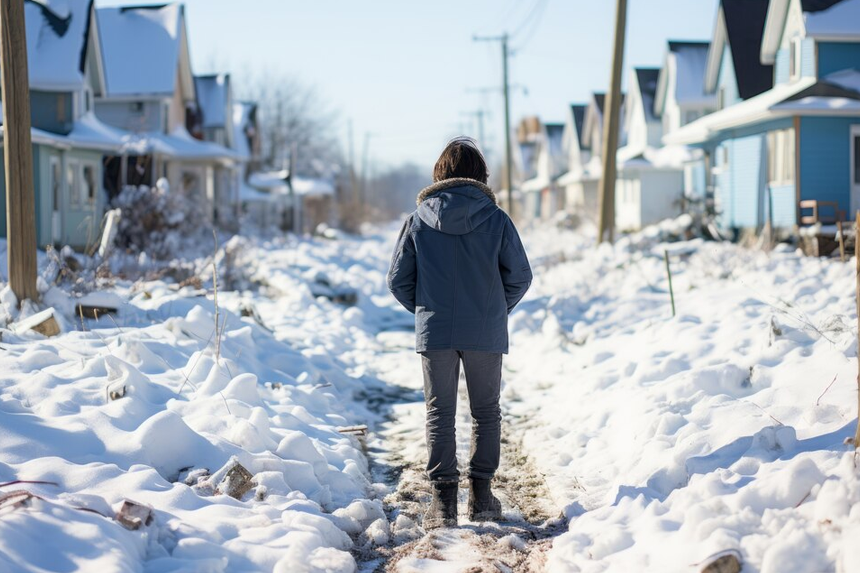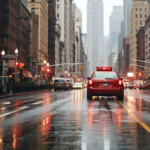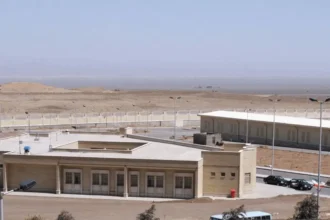Due to a massive winter storm, North America is experiencing the coldest temperatures and most snowfall in over ten years. The storm affects 30 U.S. states from Kansas to the East Coast, and more than 60 million Americans are under winter weather alerts.
As the polar vortex—a region of cold air around the Arctic—brings in extreme weather, the National Weather Service (NWS) predicts snowfall totals of 6–12 inches (15–30 cm) from Ohio to Washington, D.C.
For What Reasons Have States Issued Emergencies?
States of emergency have been proclaimed in Kentucky, Virginia, West Virginia, Kansas, Arkansas, and Missouri in anticipation of the storm’s effects. It is predicted that even Florida, famed for its mild climate, would have frigid temperatures.
It will be chaotic and possibly disastrous. One meteorologist remarked, “This is something we haven’t seen in a long time.”
What effects Does snowfall Have in the East and Central United States?
At least three feet of snow has already covered upstate New York. The mayor of Washington, D.C., has declared a snow emergency through Sunday night, expecting 5 to 9 inches of snow. NWS projections indicate 8 to 12 inches accumulations might occur in Annapolis, Maryland.
Nebraska, Missouri, and Kansas are under blizzard warnings. Up to 10 inches of snow and sleet have been reported in Kansas and 14 inches in northern Missouri.
According to the NWS, it might be the most snowfall in at least ten years for areas in this area that get the most snowfall.
Are Record High Temperatures Occurring?
Many predicted that “this could lead to the coldest January for the U.S. since 2011,” but meteorologists have pointed out that the current cold period is historic. The winter storm has caused temperatures to stay 12–25°F (7–14°C) below average for at least a week.
What Effects Does Travel Have Throughout the United States?
Nationwide, the storm has seriously disrupted travel. Flight-tracking agencies report that around 1,500 planes have been canceled, and 5,000 more have been delayed. Amtrak has also suspended many train services.
Major airlines such as American, Delta, Southwest, and United are eliminating change fees to help stranded travelers.
How Is the Arctic Blast Affecting Canada?
Canadians north of the border are also feeling the effects of the storm. With freezing temperatures from coast to coast, many nations are under an extreme weather alert.
Due to wind chills, temperatures in Manitoba might drop as low as -40°C, and up to 15 inches of snow could fall in some regions of Ontario. Snow squalls, which are intense bursts of heavy precipitation coupled with strong gusts, are making road conditions problematic.
Which Hazards Are Present on the Roads?
Road conditions have drastically worsened in all impacted areas. Multiple car accidents have been recorded in Kansas, including a fire engine rollover close to Salina.
“Whiteout conditions will make travel extremely hazardous, with impassable roads and a high risk of motorists becoming stranded,” the NWS warned severely. Rescue and relief activities are made more difficult by the hazardous road conditions caused by the winter storm.
Will thunderstorms exacerbate the chaos?
Severe thunderstorms that can produce tornadoes are predicted to sweep eastward from Arkansas and Louisiana into Mississippi and Alabama on Sunday night, adding to the meteorological turmoil.
What Steps Should the Nation Take to Get Ready for Next Week?
Millions of Americans and Canadians are bracing for one of the most severe winters in recent history as the winter storm continues its unrelenting advance. Flight cancellations, ice roadways, and record-breaking temperatures are just a few of the storm’s widespread consequences.
One forecaster stressed that this was a historic weather event. “Communities need to be alert and ready for the coming days.”








